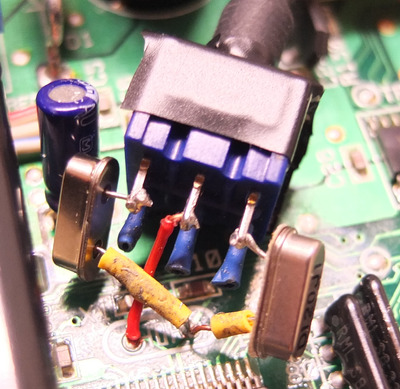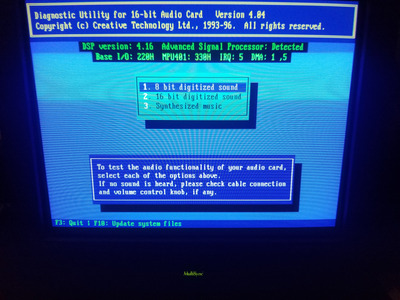Maelgrum wrote on 2023-10-14, 03:22:
Source code update.
small optimizations
with MACRO usage - much easier to read and understand, looks nicer
I'm currently using this version (calling it v6) and I noticed something odd after using it for a bit.
Namely 16-bit audio stopped working (hung) in some if not all cases -- namely Windows NT 3.51. When playing a WAV file of 22050 16-bit (Win2000's logon/logoff sounds are good examples) there was no sound and progress bar would not move, but I'm able to stop the playback. Playing a 22050 8-bit file works fine, though. I thought it might be a driver issue so I searched online and found a newer SB16 driver for NT3.5, but no difference.
EDIT: This issue does not occur with VBox's SB16 emulation on a test NT3.51 VM of mine (files in question played fine there) so software issues can be ruled out.
From DOS I also just tried TEST16 from DIGPAK and it hung at 16-bit mono test as well (8-bit works). However, when I tested 16-bit in SB16 DIAGNOSE everything's fine.
I wonder what might have been changed between these versions of modded DSP code. I haven't really paid attention about whether the same issue happens with the stock DSP chip, however... as I hardly played anything that really used high sample rate 16-bit audio samples...
LATE EDIT: Turned out this issue I'm having is invalid. I have also reproduced this same issue on a different, older system with a real AWE64 Gold (DSP 4.16). Audio samples beyond threshold would refuse to play on Windows NT 3.51.
Interestingly, on the same system, non-Creative cards like YMF718 and ALS007 can play the same audio files just fine.



